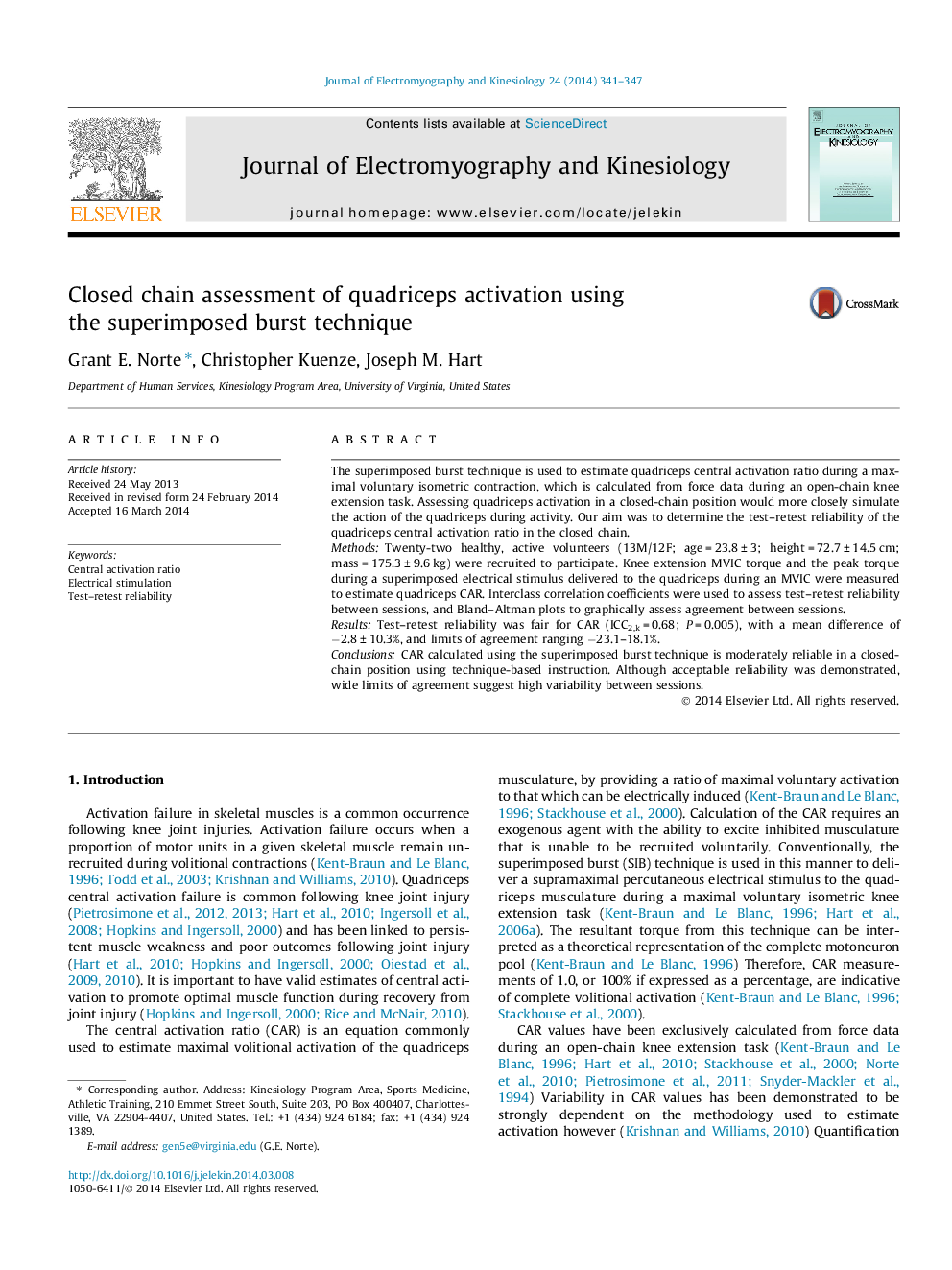| Article ID | Journal | Published Year | Pages | File Type |
|---|---|---|---|---|
| 6210483 | Journal of Electromyography and Kinesiology | 2014 | 7 Pages |
The superimposed burst technique is used to estimate quadriceps central activation ratio during a maximal voluntary isometric contraction, which is calculated from force data during an open-chain knee extension task. Assessing quadriceps activation in a closed-chain position would more closely simulate the action of the quadriceps during activity. Our aim was to determine the test-retest reliability of the quadriceps central activation ratio in the closed chain.MethodsTwenty-two healthy, active volunteers (13M/12F; age = 23.8 ± 3; height = 72.7 ± 14.5 cm; mass = 175.3 ± 9.6 kg) were recruited to participate. Knee extension MVIC torque and the peak torque during a superimposed electrical stimulus delivered to the quadriceps during an MVIC were measured to estimate quadriceps CAR. Interclass correlation coefficients were used to assess test-retest reliability between sessions, and Bland-Altman plots to graphically assess agreement between sessions.ResultsTest-retest reliability was fair for CAR (ICC2,k = 0.68; P = 0.005), with a mean difference of â2.8 ± 10.3%, and limits of agreement ranging â23.1-18.1%.ConclusionsCAR calculated using the superimposed burst technique is moderately reliable in a closed-chain position using technique-based instruction. Although acceptable reliability was demonstrated, wide limits of agreement suggest high variability between sessions.
